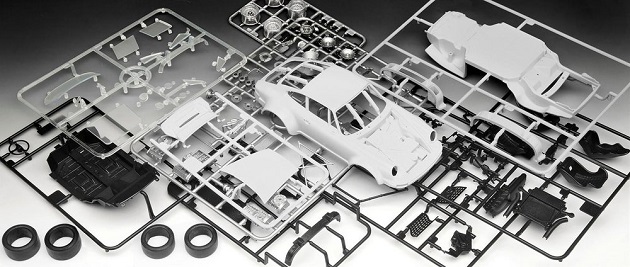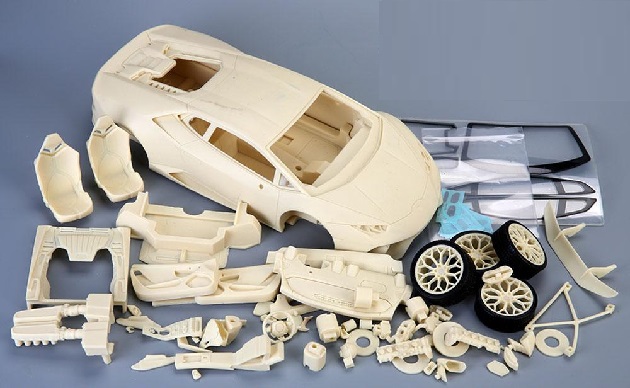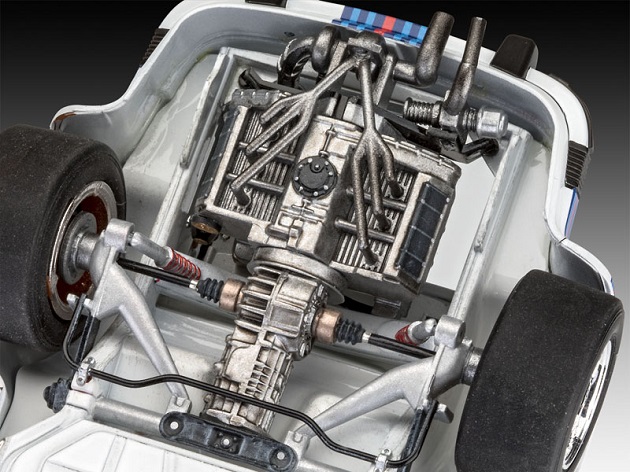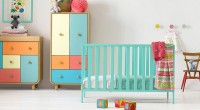Car Model Kits: Important Things to Know Before Buying Your First Model
Plastic car model kits are some of the most popular in the scale modelling hobby as they’re not too hard to assemble and are quite affordable. If cars are your passion, or you’re thinking about finding the perfect gift for your kid, race car model kits (or even an RC car) are the perfect solution. However, with the great variety of car model kits available on the market, beginners may find picking the ideal model quite difficult.

Obviously, the first thing to take into account is your personal taste. There’s no point in getting a model kit of the latest luxury sports cars if you’re into rally cars or muscle cars. Luckily, there’s plenty of models for everyone. From modern hybrids to pre-war cars, everyone can find something they like. Once you have an idea of what type of model you want to build, you’re going to have to decide on the scale of the model.
The most popular scale for race car model kits is 1/25 or 1/24. These numbers represent how many times the plastic model car kit is downsized when compared to the real-life model. The 1/25 and 1/24 scale models are the most popular ones because the die-cast models were always made with those scales. However, there are also smaller and bigger options available, such as 1/32 or 1/12. Keep in mind that you may not be able to find the model you want at those scales, and expect to pay much more money for a bigger model, such as a 1/12.

Then, you should consider the skill level the kit is recommended for. Most model car kits online stores allow you to narrow down your search based on skill level and scale, which makes the buying process easier, and it’s mainly why I personally recommend buying online. So for instance, if you’re buying a car kit for your child, you’ll probably want to buy a beginner’s kit, which can be one of three types – quick build, classic snap-together kit, or build ‘n play. After you’ve mastered these kits, or if you’re a handy person who wants to dive into the more intermediate skill level kits, then you should consider getting glue-together kits.
Once you get your kit, you’re going to need some basic tools and supplies. For instance, every kit will require you to buy a pair of nippers and a hobby knife. The nippers are needed to remove parts from the sprue properly, while the knife will let you “clean them up”. The cleaning process can include removing small lines of plastic that can appear where the two sides of steel moulding meet, removing any extra piece of sprue or shaving down a part to make it a better fit.

If you’re buying a glue kit, you’ll need some paint, hobby glue meant for this specific purpose, and paintbrushes. One mistake a lot of people make when buying the aforementioned things is that they overbuy. To avoid that, just get basic glue, a few bottles of paint (you can get prepacked paint sets), and only the tools that you absolutely need to put everything together. Making the kit look professional shouldn’t be a concern. Instead, you should use the first couple of kits to help you learn and get a better understanding of the techniques and skills you need to complete a build.
As time goes on, you’re going to want a lot more tools and supplies, such as sandpaper/files, masking tape, tweezers, modelling putty, etc. You can get all of these supplies in your local hobby store, or as I prefer – online. Most kits come with a list of paint for the colours required, either in the instructions or on the box. And remember – if you’re just getting started you don’t need to spend a lot of money on tools. Start with the bare minimum to complete the model and test the waters, and only if you’re hooked to the hobby should you look to expand your toolset.
Lastly, you have to consider the availability of aftermarket detail sets for the model you want. This is something that you’ll notice as you get more experienced, but I thought that giving you a heads-up can’t hurt. Superfine moulds, for instance, are expensive and difficult to make, and thin plastic parts are very easy to break. That being said, some detailing sets are available by the manufacturer, while others from third party brands. The detailing sets can be made of photo-etched resin or metal, and they may include small details like a radiator mesh. However, you can also buy other parts to upgrade, like better-detailed tyres, better-looking metal transfers or seat belts, just to name a few.



